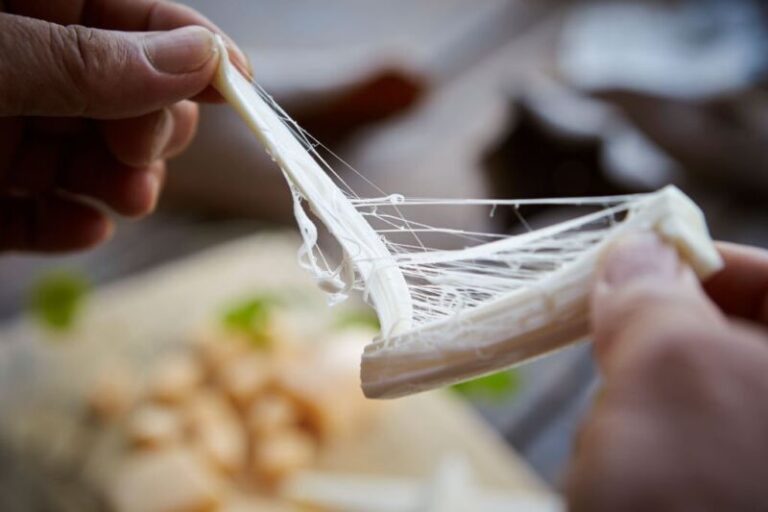What Tomatoes To Use For Tomato Soup?
A steaming bowl of tomato soup is the ultimate comfort food. With its warm, velvety texture and rich, savory tomato flavor, it’s no wonder tomato soup remains a beloved classic. But the key to a truly great tomato soup lies in using excellent tomatoes. The variety and quality of the tomatoes makes all the difference in bringing out that intense, sweet tomato taste.
So what are the best tomatoes to use when making tomato soup from scratch? Should you opt for fresh or canned tomatoes? And does it really matter if you peel and deseed them first? This guide covers everything you need to know to make deeply flavorful tomato soup, from choosing the right tomato varieties to preparation methods for boosting flavor.
Best Tomatoes for Tomato Soup

When deciding which tomatoes to use, keep these qualities in mind: rich, complex flavor, low water content, and a firm flesh that maintains its shape when cooked. Here are some of the top options:
Plum Tomatoes
With their oval shape, meaty flesh, and sparse seeds, plum tomatoes are one of the best choices for tomato soup. Their dry, dense interior makes them perfect for processing into soups, sauces, and other cooked dishes. Plum tomatoes come in a few popular varieties:
- Roma Tomatoes: Also called Italian plum tomatoes, Roma tomatoes are a longtime favorite. Their small, firm size and few seeds make them ideal for soup. Roasting intensifies their sweetness.
- San Marzano Tomatoes: Grown in the hot, dry climate near Mount Vesuvius in Italy, San Marzano tomatoes have a low acidity and rich taste. Their thinner skin and elongated shape give them fewer seeds. San Marzanos can be hard to find fresh, but are readily available canned.
Cherry Tomatoes
Sweet cherry tomatoes offer a slightly different flavor profile that makes a nice variation in tomato soup. Look for cherry tomatoes still attached to the vine for the best flavor and firmness. Roasting concentrates their sugars, but they can also be used raw in soup for a fresher tomato taste.
Beefsteak Tomatoes
Large, meaty beefsteak tomatoes work well for making a lighter, summertime tomato soup. Peel and core beefsteak tomatoes before using to improve the flavor intensity. Their juicy flesh makes them less suitable for richer, winter soups.
Canned Tomatoes
When fresh tomatoes are out of season or difficult to find, canned whole or diced tomatoes can make a good substitute. Opt for cans labeled plum, Roma, or San Marzano for the best flavor and texture. If the tomatoes seem watery, cook down the liquid or add tomato paste to thicken.
Fresh vs. Canned Tomatoes for Tomato Soup
One of the most important decisions when making tomato soup is whether to use fresh or canned tomatoes as the base. Both fresh and canned tomatoes have their pros and cons for soup making.
Benefits of Using Fresh Tomatoes
Fresh, ripe tomatoes right off the vine make for delicious homemade soup with these advantages:
- More robust, complex tomato flavor when at peak ripeness
- Better texture from firm, juicy fresh tomatoes
- Can find locally grown heirloom tomatoes for optimal taste
- Control over tomato variety and quality
- Deeper, richer flavor when roasted before using in soup
Downsides of Fresh Tomatoes
Using fresh tomatoes does come with a few drawbacks:
- More prep work required – washing, coring, seeding, peeling, etc.
- Need to use quickly before tomatoes deteriorate
- Flavor and texture suffers from subpar tomatoes
- Not always available year-round
Benefits of Canned Tomatoes
Quality canned tomatoes can also make delicious tomato soup with these upsides:
- Available year-round for convenience
- Consistent flavor and quality in every can
- Picked and canned at peak ripeness to lock in flavor
- Takes less prep work – just open the can and use
- Long shelf life of unopened cans
Downsides of Canned Tomatoes
Using canned tomatoes has some disadvantages as well:
- Can have a metallic taste from the can
- Less control over tomato variety used
- Often less rich, nuanced flavor than peak fresh tomatoes
- May contain preservatives or other additives
So should you use fresh or canned tomatoes? Here are some factors to consider when deciding:
- Seasonality – use fresh tomatoes in season, canned when fresh are not optimal
- Convenience – canned if ease is key, fresh for more control
- Flavor desired – fresh often has more complexity, canned offers reliability
- Texture preference – fresh tomatoes have firmer flesh
- Recipe needs – canned can work in most soups, fresh benefits thicker, heartier soups
With high quality ingredients, both fresh and canned tomatoes can make outstanding tomato soup. Let seasonal availability and your recipe guide you in choosing which tomato base to use.
Peeling and Deseeding Tomatoes
Peeling and deseeding tomatoes before adding them to soup is optional, but can help achieve a silky texture.
Peeling Tomatoes
Peeling isn’t necessary, but removes the skin for a smoother soup. To peel easily, briefly blanch tomatoes in boiling water, then transfer to an ice water bath. The skins will slide right off.
Deseeding Tomatoes
For the smoothest possible texture, halve tomatoes and scoop out the seeds and gel with a spoon. However, for rustic tomato soups, the seeds don’t need to be removed. Pureeing the soup will break down most of the seeds.
Boosting Tomato Flavor

To get the most flavor from the tomatoes, try these easy tricks:
Roast the Tomatoes
Roasting concentrates the flavor of fresh tomatoes, resulting in a richer-tasting soup. Coat tomato halves or quarters with olive oil, season with salt and pepper, and roast at 400°F until caramelized.
Add Sun-Dried Tomatoes
Chopped sun-dried tomatoes introduce an intense, almost smoky tomato flavor. Add them near the end of cooking for a flavor boost.
Use Stock and Cream
For more body and luxurious taste, use chicken or vegetable stock instead of water. Stirring in a swirl of heavy cream, butter, or full-fat coconut cream at the end also enhances the flavor.
Preventing Stringy Tomato Soup
Nothing ruins a velvety tomato soup like unpleasant strings of tomato floating through it. Here’s how to prevent that:
Add a Tiny Bit of Baking Soda
Natural acids in tomatoes can cause milk or cream to curdle and turn stringy. Adding just a pinch of baking soda reduces acidity for a smooth emulsion.
Temper the Cream
Gradually pouring some hot soup into cold cream before adding it to the pot brings the cream up to temperature slowly for better incorporation.
Conclusion
For the ultimate tomato soup, start with flavorful tomatoes that contain less liquid, like plum and cherry varieties. Roasting maximizes their sweetness and complexity. While fresh tomatoes make the most of summer’s bounty, don’t shy away from canned when fresh are less flavorful. With a few simple tricks and the right tomatoes, you can enjoy restaurant-quality tomato soup at home.
What tips do you have for making insanely delicious tomato soup? Let me know in the comments!






